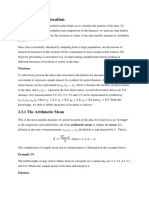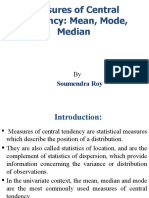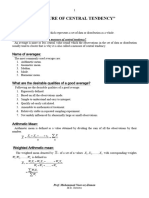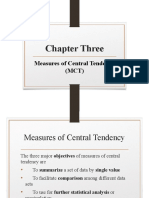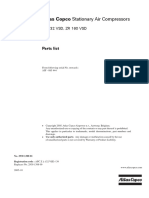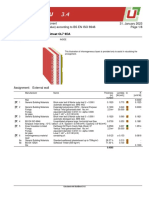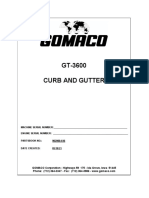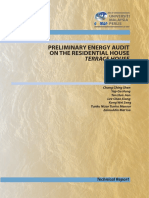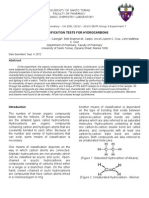0% found this document useful (0 votes)
9 views28 pages3 Data Descrition
The document discusses descriptive statistics, including measures of central tendency (mean, median, mode) and dispersion, distinguishing between statistics (sample) and parameters (population). It explains how to calculate arithmetic and weighted means, geometric means, and the median, providing examples for clarity. The document emphasizes the importance of selecting appropriate measures based on data characteristics and the influence of extreme values on the mean.
Uploaded by
talaatemad666Copyright
© © All Rights Reserved
We take content rights seriously. If you suspect this is your content, claim it here.
Available Formats
Download as PDF, TXT or read online on Scribd
0% found this document useful (0 votes)
9 views28 pages3 Data Descrition
The document discusses descriptive statistics, including measures of central tendency (mean, median, mode) and dispersion, distinguishing between statistics (sample) and parameters (population). It explains how to calculate arithmetic and weighted means, geometric means, and the median, providing examples for clarity. The document emphasizes the importance of selecting appropriate measures based on data characteristics and the influence of extreme values on the mean.
Uploaded by
talaatemad666Copyright
© © All Rights Reserved
We take content rights seriously. If you suspect this is your content, claim it here.
Available Formats
Download as PDF, TXT or read online on Scribd
/ 28






